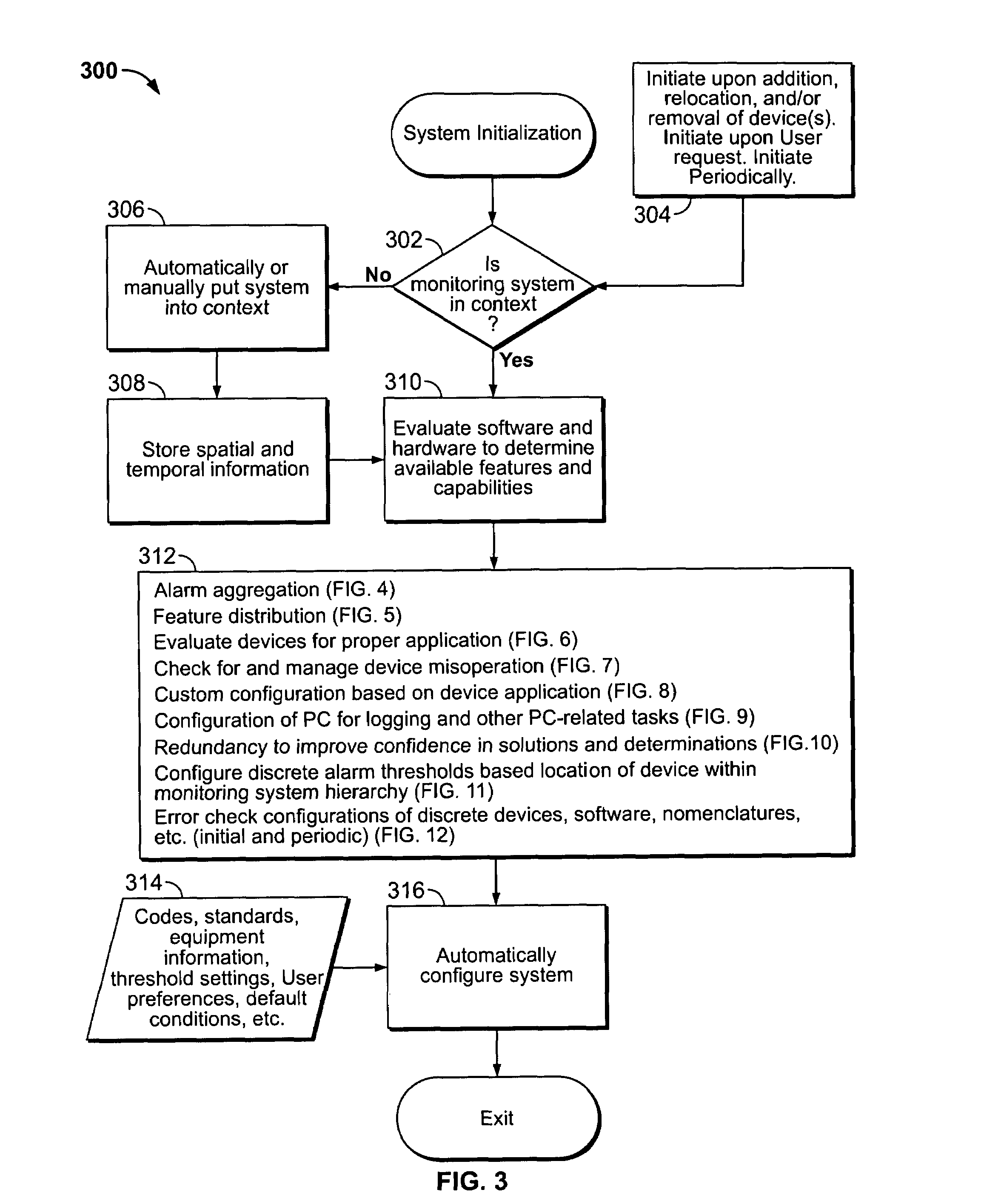Automated configuration of a power monitoring system using hierarchical context
a technology of automatic configuration and power monitoring system, applied in the field of utility systems, can solve the problems of service providers having to devote a substantial amount of time and not meet the requirements of the power monitoring system, and achieve the effects of reducing or eliminating the need for manual configuration, increasing short-term and long-term operational effectiveness, and saving tim
- Summary
- Abstract
- Description
- Claims
- Application Information
AI Technical Summary
Benefits of technology
Problems solved by technology
Method used
Image
Examples
Embodiment Construction
[0024]Turning now to FIG. 1, a power monitoring system 100 having two or more monitoring devices 102 (labeled M) providing characterized data from each discrete location. As used herein, a monitoring device refers to any system element or apparatus with the ability to sample, collect, and / or measure one or more electrical characteristics or operational parameters of a utility system. The power monitoring system 100 is part of an electrical system that includes the monitoring devices 102. By “power” in the term power monitoring system, it is meant to include power, voltage, current, frequency, or other electrical characteristics that can be used to determine and characterize the electrical system hierarchy. In some aspects, the data from each monitoring device 102 is communicated to an automated data alignment module 104, an automated hierarchy classification module 106 and an automated configuration module 108. These systems can be implemented as algorithms on a computer-readable me...
PUM
 Login to View More
Login to View More Abstract
Description
Claims
Application Information
 Login to View More
Login to View More - R&D
- Intellectual Property
- Life Sciences
- Materials
- Tech Scout
- Unparalleled Data Quality
- Higher Quality Content
- 60% Fewer Hallucinations
Browse by: Latest US Patents, China's latest patents, Technical Efficacy Thesaurus, Application Domain, Technology Topic, Popular Technical Reports.
© 2025 PatSnap. All rights reserved.Legal|Privacy policy|Modern Slavery Act Transparency Statement|Sitemap|About US| Contact US: help@patsnap.com



